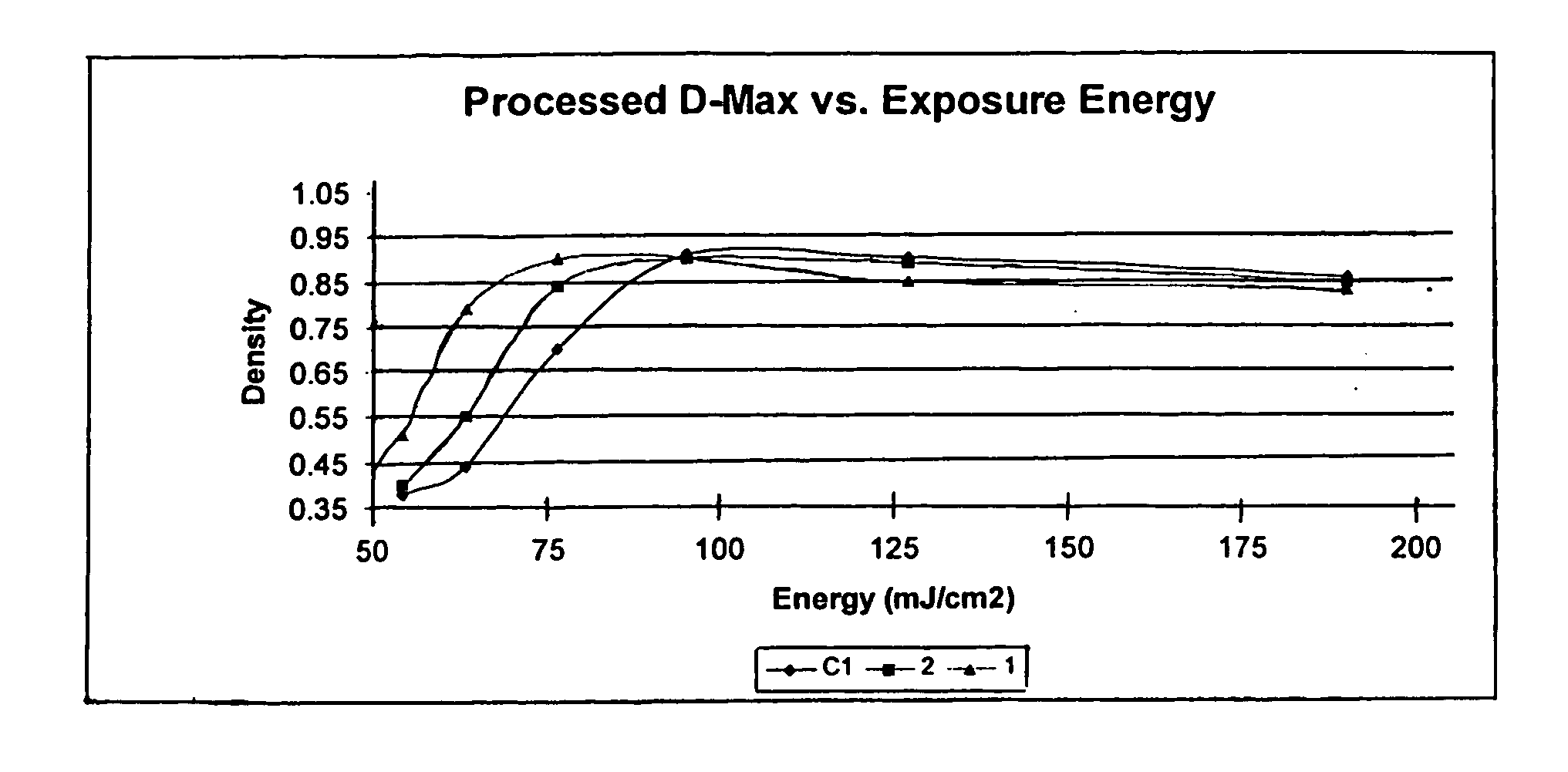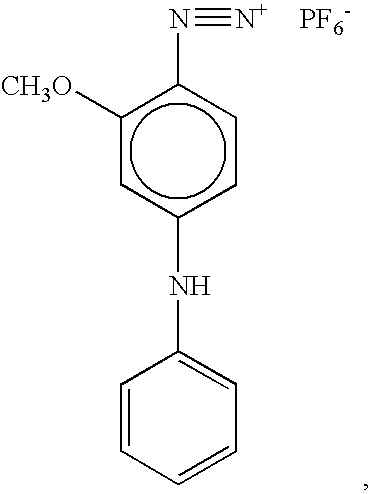Imageable composition containing an infrared absorber with counter anion derived from a non-volatile acid
a counter anion and infrared absorber technology, applied in thermography, instruments, photosensitive materials, etc., can solve the problems of poor shelf life of plates, control has had deleterious effects on plate performance, slow plate production, etc., to improve cure rate and processing latitude of imageable compositions, improve processing latitude, and increase the imaging speed of imageable elements
- Summary
- Abstract
- Description
- Claims
- Application Information
AI Technical Summary
Benefits of technology
Problems solved by technology
Method used
Image
Examples
examples
The following are referred to hereinafter: (1) Resin A—a resole resin, UCAR phenolic resin BKS-5928 as supplied by Union Carbide Corporation. (2) Resin B—a novolak resin, N-9P as supplied by Eastman Kodak Company (Rochester, N.Y.). (3) Resin C—a novolak resin, N-13 as supplied by Eastman Kodak Company. (4) Acid generator A—Diazo MSPF6 as supplied by Diversitec Corporation (Fort Collins, Colo.) having the following structure: (5) IR dye A—infrared-absorbing dye having the following structure: (6) Blue dye A—Simbase Victoria Blue FBO 23363, as supplied by Charkit Chemical Corporation (Darien, Conn.). (7) Blue Dye B—D11 dye having the structure: (8) Terephthaldehyde as supplied by Aldrich Chemical Co. (Milwaukee, Wis.). (9) XDSA, having the following structure: (10) HMBS—3-benzoyl-4-hydroxy-6-methoxybenzenesulfonic acid as supplied by Aldrich Chemical Co. (11) Substrate—0.3 mm thick sheets of aluminum that had been electrograined, anodised and post-anodically treated wi...
examples b4 to b8
Coating formulations comprised solutions of the components described in Table 10 in 1-methoxypropan-2-ol / acetone 92:8 (w:w). Plates were prepared by coating the formulations onto the aluminum substrate by means of a whirl coater. The formulation concentrations were selected to provide dry films having a coating weight of 120 mg / ft2. The coated plates were dried at 100° C. for 90 seconds. The film weights were measured after thorough air drying over several days.
TABLE 10Coating formulations for Examples B4 to B8.ExampleB4B5B6B7B8Parts by WeightResin A28.4828.4728.4428.4228.41Resin C48.6048.5548.5148.4948.46Acid Generator A7.547.537.537.527.52IR Dye A7.887.877.867.867.85Terephthaldehyde6.546.536.526.526.52Blue Dye B0.961.051.141.191.24
Thermal Exposure:
Plate samples were then imaged on the Creo Trendsetter at 55, 64, 77, 96, 129 and 194 mJ / cm2, using an internal solid image pattern (100% exposure). They were then pre-heated in the heavy duty Wisconsin oven (conveyor speed=2.5 fee...
PUM
| Property | Measurement | Unit |
|---|---|---|
| Structure | aaaaa | aaaaa |
| Acidity | aaaaa | aaaaa |
| Crosslinkable | aaaaa | aaaaa |
Abstract
Description
Claims
Application Information
 Login to View More
Login to View More - R&D
- Intellectual Property
- Life Sciences
- Materials
- Tech Scout
- Unparalleled Data Quality
- Higher Quality Content
- 60% Fewer Hallucinations
Browse by: Latest US Patents, China's latest patents, Technical Efficacy Thesaurus, Application Domain, Technology Topic, Popular Technical Reports.
© 2025 PatSnap. All rights reserved.Legal|Privacy policy|Modern Slavery Act Transparency Statement|Sitemap|About US| Contact US: help@patsnap.com



